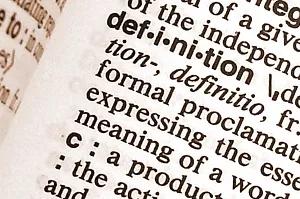What is Change Management?
Change Management Challenges
“The only constant in life is change” is an old quote from the Greek philosopher Heraclitus, and it remains true today. In the pre-COVID-19 world, ATD Research found that 92 percent of organizations had experienced change, but that number at present must be closer to 100 percent.
During organizational change, several challenges will inevitably appear in every phase of a change management project: the planning phase, the strategizing phase, implementation, and measurement.
Some of the most common challenges include:
Duration. An effective change project from start to finish will take much longer than leaders or stakeholders expect.
Communication. A strong communication plan is needed to allow for everyone involved to feel they matter and are valued by leadership.
Commitment and support. Often, it is hard to gain buy-in from leadership and employees.
Resistance to change. Change is hard, and during an organizational change initiative, there can be a lot of resistance from all sides who feel the change is not necessary or what they want to see happen.
Change fatigue. If many organizational changes happen at once or consecutively, employees can begin to feel overburdened, confused, stressed, and burned out.
What Is Change Management?
Change management can enable change within an organization by using structured approaches to shift individuals, teams, and organizations from a current state to a future state.Once initiated, change follows its own nonlinear path in response to uncertainties, reactions, and guidance from those involved. There are change management processes, tools, resources, skills, and principles for managing the people side of change.Change management is one of the 23 capabilities in ATD’s Talent Development Capability Model and resides in the Impacting Organizational Capability domain.
What Are the Change Management Models and Principles?
Several change management models are available to help with strategizing and overcoming these challenges. Even though different models look at facilitating the change management plan or project differently, at the heart of every change management strategy are the people. Remember, as an internal change manager or change management consultant, you must always consider the human side of change first for the change to be effective and long-lasting.

The five most popular change models are:
Kotter model
Developed by John P. Kotter at the Harvard Business School, the Kotter change management model is broken up into an eight-step process for change leaders.
1. Create a sense of urgency
2. Build a guiding coalition
3. Form a strategic vision and initiatives
4. Enlist a volunteer army
5. Enable action by removing barriers
6. Generate short-term wins
7. Sustain acceleration
8. Institute change
The Prosci ADKAR Model
The ADKAR model is one of the two foundational models of the Prosci methodology. ADKAR is an acronym for the five outcomes an individual needs to achieve successful change: awareness, desire, knowledge, ability, and reinforcement.This model is based on the understanding that organizational change can only happen when individuals change.
Kubler-Ross Change Curve
Also called the DABDA model, it is based on the book On Death and Dying and lists the stages of grief a person goes through when dealing with a death or significant change. This model follows a nonlinear path called the change management curve:
· Denial (shock/status quo)
· Anger (disruption/fear/frustration)
· Bargaining (exploration of alternatives)
· Depression (demotivation/uncertainty or experimentation)
· Acceptance (rebuilding/decision)
Some also add a shock element at the beginning and implementation or integration step after acceptance to help facilitate this model.
Lewin’s model
Broken into three components, Lewin’s model teaches you to unfreeze the situation, institute the change, and refreeze. Change agents need to determine the need for change, understand why the change is necessary, speak with stakeholders about the change, and create the change. After the first portion is complete, empowering and instituting the change is necessary while continuing to communicate to all stakeholders and leaders involved. The final stage of refreezing keeps the fresh change from unraveling by culture initiatives, training, and further communication.
Bridges Transition Model
Developed by William Bridges about 30 years ago, this change management model includes three stages: Ending What Currently Is, The Neutral Zone, and The New Beginning. Bridges defines change as external to one’s being and transition as the inner psychological process employees go through during organizational change. The Bridges transition model includes six steps: communication, information dissemination, auditing the organization’s transition readiness, education and enabling leaders to manage the transition, monitoring, and empowering individuals in the organization to take ownership of the change.
What Is Talent Development’s Role in the Change Management Process?
A TD professional understands the change management models and strategies as well as how to implement them. TD professionals also are adept at understanding how change impacts the organization and the employees with a keen eye for assessing risk, resistance, and consequences to define the right change management approach. They help facilitate the change directly, whether they are internal players or external consultants.
How ATD Can Help You Manage Change
ATD’s mission is to empower professionals to develop talent in the workplace during times of stability and change. Learn how to successfully manage change with the ATD Change Management certificate program and many publications, webinars, and other resources ATD has to offer.
For access to even more resources, including practical tools and templates, research, and insights, you’re invited to become an ATD member. Learn more.
For more information on change management, visit the following:

BLOGS
Change Management Topic Page
The latest content on implementing and adapting to organizational change. Start here!

NEWSLETTER
OD and Talent Management Newsletter
Insights and trends for improving an organization's capability. Sign up today!

CERTIFICATE PROGRAM
Change Management Certificate
Prepare to use a proven change model to design a strategic change plan that minimizes impact and maximizes buy-in. Learn More!

OCTOBER 20–22, 2025
ATD OrgDev
Learn to create a more inclusive culture, build talent retention, and create an engaged workforce.
There is still time to register!

GLOSSARY TERMS
Talent Development Glossary Terms
Learn about essential terms and need-to-know expressions for training and development professionals. Explore now!
Free E-Book: The Importance of Change Management Training
Discover why change management training is important, how to assemble a change management team, and assess your organizational change readiness.
